It’s our hope that each of you, our readers, will enjoy and appreciate this article we present about these 4 Lovely European Lakes. It was certainly our true pleasure to gather the various information for you. May it provide you with both education and increased awareness.
Certainly, these few bodies of water listed herein represent only a portion of the natural wonders found throughout this amazing region. It’s our belief, though, that they serve as excellent representations of the wonders found here. Check out some of our other articles.
Lake Posta Fibreno
Lake Posta Fibreno Facts
- Leading off this article about these 4 Lovely European Lakes we give you the stunning formation known in its region as Lake Posta Fibreno.
- The sublime beauty of this place only serves to function as an embellishment of its exotic nature. That’s because, its scenic appeal notwithstanding, the site ranks as one of the most unusual lakes to be found anywhere in the entire world.
- Given its location, the marvelous site has long been known to modern man. It currently remains unknown if prehistoric man knew of its existence. To date, no known archaeological evidence of a prehistoric presence in its immediate region exists.
- This marvel of nature also holds a somewhat notable place in history. The Roman naturalist and philosopher, Pliny the Elder, recorded the earliest known account of the sites existence. He noted the experience in his 1st-century Naturalis Historia.
- Quite fortunately, wonderful Lake Posta Fibreno now enjoys a certain level of protection from the depredations of man. That’s due to the fact that the lake, and its surroundings, now form part of the Lago di Posta Fibreno Regional Nature Reserve.
- This location remains as astounding today as it did in ancient times. It’s not just its beauty and unusual chemical composition that make it notable, however. Its most defining feature, in fact, continues to be the long-term presence of a floating island!
Lake Posta Fibreno Physical Description
It bears noting that the magnificent Lake Posta Fibreno fully merits its high degree of appreciation for its natural wonders. It does so, however, completely regardless of its physical size. Nature, it seems, understands that magnificence has no relation to volume.
That bold statement holds true due to the fact that this location remains relatively small in terms of overall size. More precisely, its surface area only measures roughly 0.111 sq mi (0.287 sq km). Put another way, that’s roughly equal to 40 soccer fields in volume.
Its dimensions, though, remain quite irregular in nature. These also vary according to such factors as the inflow of water and evaporation. The sole source of its water, furthermore, other than rainfall, continues to be the presence of underground mineral springs.
The feature for which Lake Posta Fibreno became famous for, however, is undoubtedly its floating island. This actually formed over a long period of time, however. It’s principally composed of a significant accumulation of peats, roots, and free-floating rhizomes.
This remarkable floating mass also boasts highly respectable measurements for a formation of its type. It’s approximately 130 ft (39.6 m) wide, and 13 ft (3.96 m) in thickness. Shrubs and even small trees also grow on it surface, which catch the wind, moving it across the water.
Lake Posta Fibreno Location, Formation, and Ecology
The breathtaking, and surprising, Lake Posta Fibreno formed in a part of the world already renowned for its natural splendor. This remarkable work of Nature also exists in an area of the Northern Hemisphere holding significant historical importance to mankind.
More precisely, the fascinating body of water formed in what now constitutes the country of Italy. For those readers who may not know, that places it in the southern portion of the continent of Europe. With further precision, it’s found in the province of Lazio.
The site also owes its nature and formation to the actions of subterranean lakes, siphons, waterfalls, and rivers. The stunning body of water originated from the collection of water discharged from these. They in turn emerged near the base of the Apennine Mountains.
Due to its nature, Lake Posta Fibreno also now maintains a unique ecosystem. Renowned for its astounding clarity, the water maintains a nearly constant temperature of 50 F (10 C). That clarity stems from its passage through the surrounding limestone.
It further serves as home to a variety of bird species, as well as several fish species. One of these, in fact, appears to be solely native to this one site. Unfortunately, however, an invasive species of mammal, imported from South America, threatens to disrupt its balance.
Plitvice Lakes
Plitvice Lakes Facts
- The next location featured in this compendium of 4 Lovely European Lakes is the utterly breathtaking site now bearing the name of Plitvice Lakes.
- Quite clearly, this marvel of Nature represents a spectacular close grouping of more than a dozen marvelous lakes. Despite the impressiveness of the site, however, size does not play a factor. That’s due to the fact that the natural lakes remain quite small in size.
- Collectively, these incredible bodies of water additionally form part of the appropriately-named Plitvice Lakes National Park. The Park itself further holds its own incredible wonders. That’s because it constitutes a site teeming with stunning natural beauty.
- The marvel also formed in a particularly beautiful, if somewhat remote, section of the world. More precisely, it formed in an isolated section of Europe. There, the gorgeous Plitvice Lakes quite understandably serves as one of the most popular tourist draws in its region.
- Lastly, yet not surprisingly, comes the great honor bestowed upon the site. The astounding natural beauty of this region prompted UNESCO to name the wonder of Nature a World Heritage Site. This, thankfully, provides the location with a certain measure of protection.
Plitvice Lakes Physical Description
Clearly, the truly magnificent Plitvice Lakes easily earns its name. That holds true because this location dazzles us with a grand total of 16 small but gorgeous lakes. These, along with the many gorgeous waterfalls also present in the marvelous location, amaze us with extreme beauty.
The numerous lakes present also descend in a beautiful cascade from 2,087 ft (636 m) to 1,650 ft (503 m). This occurs over a distance of roughly 5 miles (8 km). On the other hand, these features range in average depth from as little as 3.3 ft (1 m) to as much as 154 ft (47 m).
These marvelous formations also remain renowned for their distinctive colors. The magnificent colors of Plitvice Lakes comes in a wide variety of hues. In point of fact, the almost kaleidoscopic colors found here range from azure to green, grey, and also blue.
This startling range occurs as the result of varying concentrations of minerals and microorganisms in the water, and changes continuously. To the amazement of many, however, this site holds yet another surprise for those fortunate enough to view it for the first time.
That holds true due to the fact that this mind-boggling splendor actually developed contained in a surprisingly tiny region. That’s because, collectively, this magnificent grouping of small lakes only covers an area measuring about 0.77 sq miles (2 sq km).
Plitvice Lakes Location and Nature
Fortunately for its preservation, the mesmerizing natural beauty known as the gorgeous Plitvice Lakes formed in a comparatively remote region of the globe. That often difficult to reach area consists of the isolated portion of the continent of Europe now known as Croatia.
These truly awe-inspiring small bodies of water actually formed as the result of a highly unique combination of factors. These consist of the meeting of several small ordinary rivers and subterranean karst rivers. That’s a rare combination, indeed.
Incredibly however, all of these sincerely special sources of its flow remain tightly interconnected. That’s due to the fact that they follow the water flow as it wends its way through the numerous naturally formed passages. This lends an almost magical ambience.
Most of these passages additionally developed as separated by naturally occurring dams,. These developed formed of the mineral known as travertine. This mineral deposited over time through the action of algae, bacteria, and moss over great spans of time.
This depositing action results in yet another remarkable fact. That’s because this continually adds additional layers to the natural dams of Plitvice Lakes. In fact, this ongoing activity produces growth at the comparatively rapid rate of about 0.4 in (1 cm) per year.
Lake Como
Lake Como Facts
- Now appearing in this listing of 4 Lovely European Lakes we give you the wonder of geological forces simply named Lake Como.
- This stunning creation of geological processes most frequently goes by the name applied here among those fortunate enough to know of it. This natural marvel also has a second name, however. That’s the much less commonly used term of Lake Lario.
- Though used far less often, the alternate term for the beautiful lake has a rich history itself. That’s because it derives from the Latin term Larius. The breathtaking beauty of the formation garnered it great appreciation even during the time of the Roman Empire.
- Even that long ago, it was a highly popular retreat for the wealthy and aristocratic. The site also constituted an extremely popular tourist attraction for the masses, even during that period. Since then, many famous people have had homes along its shore.
- In modern times, however, it earned yet another status. That’s due to the fact that it now serves as a backdrop for a magnificent UNESCO World Heritage Site. The Sacred Mountain of Ossuccio, a popular pilgrimage destination, now sits in the hills above it.
- The marvelous natural feature additionally merits appreciation for its various physical statistics. That’s true since the mind-boggling splendor of Lake Como is contained within the third-largest lake in its region. It’s also the fifth deepest lake on its continent.
- Its sheer beauty, combined with its impressive various impressive physical dimensions, also recently garnered it an award. The Huffington Post named it the most beautiful lake on earth in 2014, due to, among other factors, its micro-climate and environment.
Lake Como Physical Description
The amazing Lake Como truly stands out from the majority of similar geological features. That’s due to its unique combination of purely visual appeal, and statistically high-ranked physical dimensions. The lake also packs these into a highly irregular general outline.
Overall, though, the lake has an extremely elongated shape. It boasts a maximum measured length of approximately 29 mi (46 km). Yet, its maximum measured width only equals about 2.8 mi (4.5 km). This gives it a total surface area of an impressive 56 sq mi (146 sq km).
The remarkable attributes of this product of time and local natural forces do not simply end there, however. The fabulous body of water further boasts a total shoreline length of almost 100 mi (160 km). Those make it the largest lake on its continent, outside of Norway.
It’s depth varies significantly from place to place. Overall, though, it possesses an average depth equaling roughly 505 ft (154 m). In some spots, however, its depths plunge much further. In fact, a few locations withing its boundaries dip down to up to 1,394 ft (425 m).
These all combine to provide the dazzling formation known as Lake Como with yet one more astonishing physical attribute. Taken together, these multiple measurements provide the amazing body of water with a total water volume of 5.4 cubic mi (22.5 cubic km)!
Lake Como Location, Formation, and Environment
The gorgeous jewel known as Lake Como likely comes as no surprise to those who learn of it. That’s because it formed in a region of the world already well known for its many natural marvels. This holds true since the lake formed in a lovely section of Europe.
More pecisely, though, it lies within the boundaries of the country of Italy. Its exact location places it in the administrative region named Lombardy. This further places it in the most northern section of the country, placed very near the border with Switzerland.
The breathtaking body of water originaly formed due to glacial activities. As these largely retreated following the last ice age, the resulting meltwater deposited formed the original lake. Since that time, however, it’s been maintained by the Adda River, rainfall and runoff.
Shaped like an inverted Y, the formation also lies within a region of relatively rugged terrain. This consists largely on mountainous, pre-alpine regions. The two arms of the Y-shape surround the mountainous sections, forming what’s known as the Larian Triangle.
Due to its location and a combination of environmental factors, Lake Como maintains a humid, subtropical climate most of the year. With the surface lying at roughly 650 ft (198 m) above sea level, the lake also helps the surrounding region maintain a higher temperature.
Because of these many qualities, its popular for many activities, in addition to its pure beauty. These include wind surfing, kite surfing, and sailing. Since it has the climate that it does, the local farms produce olives, cheese, milk, eggs, honey, and even salamis.
Seven Rila Lakes
Seven Rila Lakes Facts
- Closing out this compilation of these 4 Lovely European Lakes is the distinctive wonder best known by the informative moniker of Seven Rila Lakes.
- Perhaps most notably, as the name implies, this term serves as this e name for a stunning grouping of small lakes situated together. Quite unsurprisingly, the collective beauty of these magnificent wonders of Nature creates great interest.
- This extreme appeal also makes this breathtaking location a popular tourist attraction in the area. Due to this extreme and justified, popularity, these represent the most visited lakes in the immediate region of the world in which they formed.
- However, Nature also adores variation. That appreciation for variety also presents itself here. It manifests in the characteristics of the seven individual lakes. Each of the small bodies of water formed in distinctly different shapes and dimensions.
- Each of these miniature marvels formed at slightly different altitudes. But, the entire group sits at a remarkable height above sea level. Locals long ago gave each of the Seven Rila Lakes a specific name. Each reflects characteristics unique to each of the lakes.
- Therefore, the names derive from such attributes as height, form, depth, steepness of its banks, size relative to the others, and so forth. The lakes bear the names of Okoto, Salzata, Bliznaka, Babreka, Trilistnika, Ribnoto, and Dolnoto Ezero.
Seven Rila Lakes Physical Description
Importantly, it must be noted that each member of the stunning Seven Rila Lakes has completely different dimensions. Each of them also has quite different shapes and depths from the others. Each of the gorgeous bodies does, however, have one thing in common.
That’s the fact that each measures small, regardless of their beauty. For starters, tiny Salzata remains the smallest of the gorgeous group of lakes, in terms of area. That’s because it measures only 1.7 acres (0.7 ha) in area. It also has an average depth of only 15 ft (4.5 m).
Trilistnika, meanwhile, represents the second largest of the group. It has an area of 6.4 acres (2.6 ha), and a depth of 21 ft (6.5 m). Ribnoto ezero, though, as the third largest, has an area of about 8.6 acres (3.5 ha), but has a depth measuring a total of only 8.2 ft (2.5 m).
Yet, at fourth largest in size, Dolnoto ezero has an area equaling roughly 15 acres (5.9 ha). It also has a depth of 36.1 ft (11 m). Okoto, though, measures fifth largest in area, at 17 acres (6.8 ha), but has the greatest depth. Its waters measure a total of 123 ft (37.5 m) deep.
As the sixth largest of the stunning lakes, in area, Babreka totals 21 acres (8.5 ha) in area. It also possesses has a depth of 91.9 ft (28 m). Finally, mighty Bliznaka is the largest of the Seven Rila Lakes. It has an area of 22 acres (9.1 ha), and also a depth of 90 ft (27.5 m).
Seven Rila Lakes Location, Formation, and Nature
The magical beauty known collectively as Seven Rila Lakes formed in a region of the world already well known for its natural beauty. That occurs because of the fact that these marvelous lakes formed in the country of Bulgaria, located in the southeast part of Europe.
More specifically, though, the site formed in a northwest portion of the mountain known as Rila. In addition, taken either individually or collectively, these lakes have the same origin. Each of these beautiful small bodies of water owe their existence to glacial activity.
This holds true due to the fact that the mountains in which they formed possess a covering of glaciers, as well as frequent and abundant snowfall. This provides the lakes with a regular flow. Also, each of the stunning Seven Rila Lakes has its own unique characteristic.
These, in turn, earned them names based on these traits. Locals named Salzata after the clarity of its waters. Trilistnika, recived its name based on its low shores and irregular outline. Ribnoto ezero earns its name because of the extreme shallowness of its depth.
Dolnoto ezero receives its name due to its particular position, however. That’s the fact that it sits lowest of the seven in terms of surface above sea level. In English, its name means Lowest Lake. But Okoto gets its name based on its roughly oval shape.
On the other hand, the lake named Babreka earns the term because it has the steepest shores of any of the group. And then, mighty Bliznaka, which means The Twin in English, received its name because it qualifies as the largest of the lakes.
4 Lovely European Lakes
We truly hope that each of you thoroughly enjoyed reading, and hopefully learning from, this article we’ve written about these 4 Lovely European Lakes. It’s also our sincere hope that doing so has left you with either a new or renewed appreciation for such wonders of Nature.
Unfortunately, many other such features around the world now find themselves facing threats to their continued existence in an undamaged state. Many of those dangers, in fact, stem from the actions of mankind. We must do all we can to protect and preserve them all.
Check out our other articles on 5 Magnificent Middle East Species, Spectacular Halloween-Appropriate Species, 7 Beguiling Insects of Bulgaria, Wonderful Wild Cats of the World
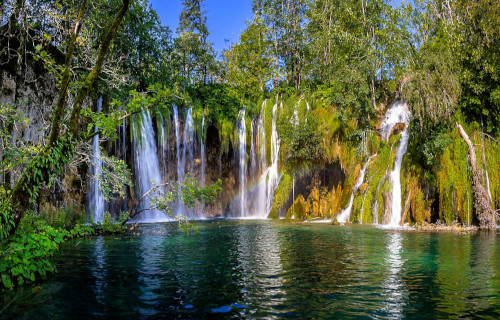
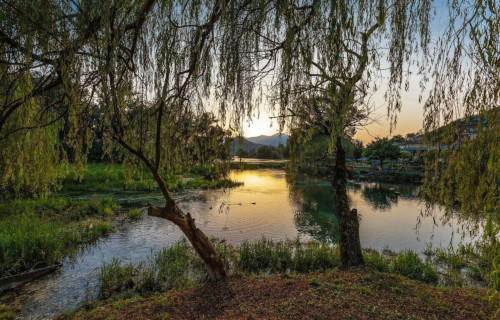
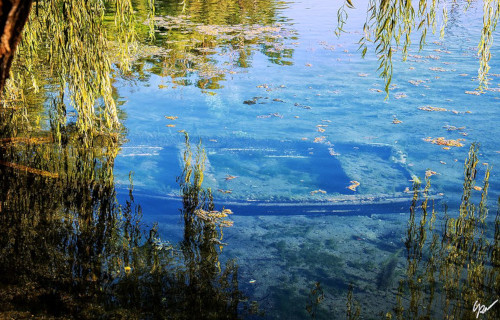
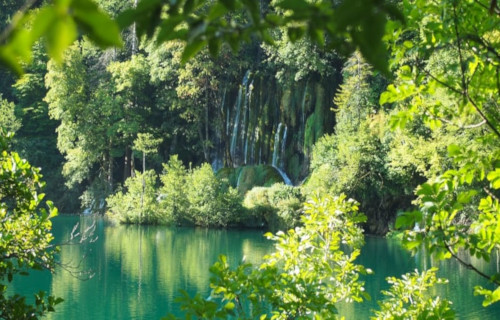

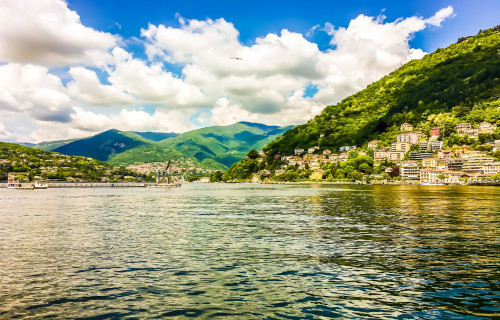
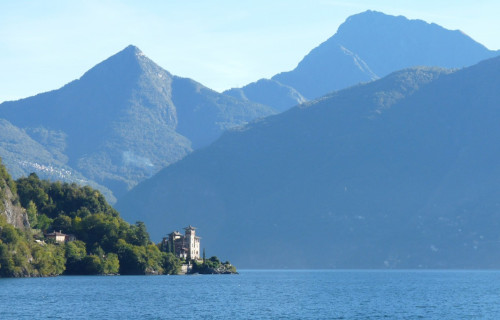
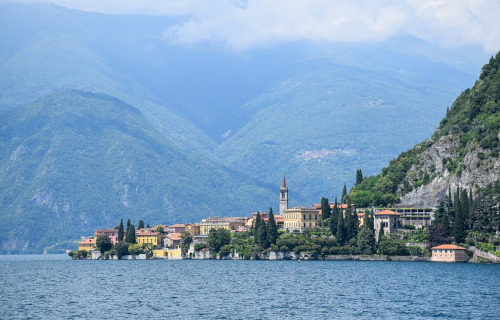
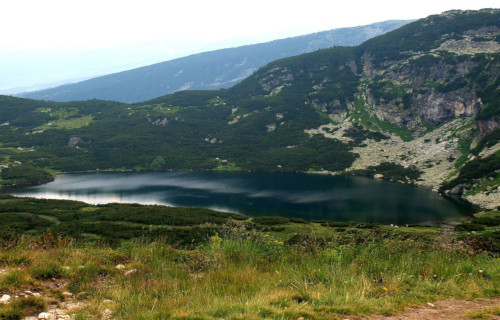
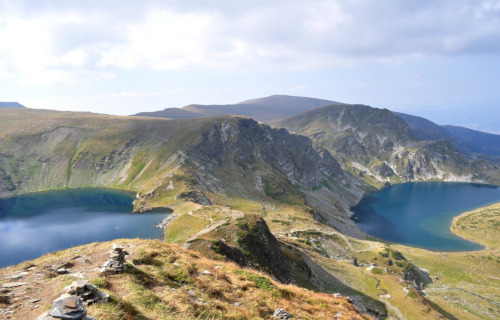
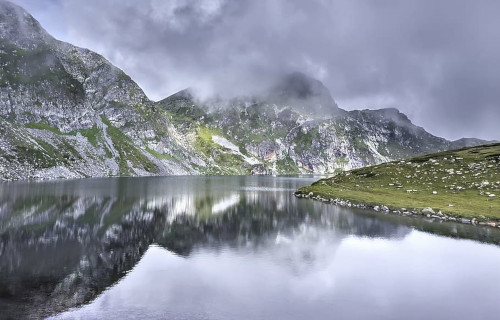









Leave a Reply